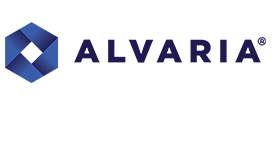Rumors of an impending recession can cause fear in individuals and businesses alike. Although it’s impossible to know when it may start, many economists predict a recession is most likely to come in late 2023 or early 2024.
Given this potential timeline, contact centres can act now to ensure their business is cost-effective. No one wants to think about losing their technology or reducing valuable staff to weather a recession.
Contact centres can reduce the impact of a possible recession by taking a close look at their technology solutions.
Making the most out of your technology investment can help you to streamline operations and maximize staffing resources, while consistently delivering great customer experiences.
Let’s look at a few ways you can get the most value out of your workforce management solution and combat the potential impact of a recession on your contact centre.
Call Forecasting
While we can’t predict the future, advanced forecasting capabilities in your call centre workforce management solution can help.
Evaluate multiple staffing scenarios to determine optimal resource deployment based on projected demand and resource pool characteristics for both short-term and long-term planning.
Take all pertinent data into account, including historical contact volumes, seasonal patterns, campaign completion rates and holiday variations. Leveraging advanced forecasting functionality helps workforce planners schedule staffing resources effectively.
This translates to less accidental overtime pay, which saves your contact centre money. Accurate forecasting can lead to less stressful work environments as well, meaning employees are less likely to leave.
And finally, accurate forecasting is a great way to combat the potential effects of a recession because it provides for more consistent, positive customer experiences which reduces the possibility for customer churn.
Call Centre Scheduling
Customers still expect great service regardless of a recession. Inaccurate scheduling can make delivering exceptional experiences unpredictable, which can cost you in the long run. In a report done by PwC, one in three consumers (32%) say they will walk away from a brand they love after just one bad experience.
The scheduling capabilities included help workforce planners reduce the possibility of customer churn by having the right agent, with the right skillset, scheduled at the right time.
With the ability to create trial schedules for testing, evaluation and modifications before they go live, workforce planners can test different staffing scenarios on anticipated channel volume, giving them the reassurance that their schedules are set up to deliver the best customer experiences.
Streamline the approval process with automatic evaluation of schedule change requests or trade requests of all kinds using configurable rules to pass/fail/waitlist/defer any kind of single day or multi-day schedule change.
Avoid costly overstaffing or understaffing due to schedule inaccuracies and reduce the opportunity for customer churn by scheduling the appropriate staffing resources at the right time.
Agent Tracking
Now that your schedules have the right agents ready to deliver great customer service at any time, workforce planners will want to ensure employees are productive and effective.
Utilize real-time views that automatically surface non-compliance to keep a pulse on your employees’ performance and make swift changes if necessary.
Lastly, access KPI-based reporting on the full breadth and depth of workforce metrics such as schedule adherence, shrinkage, service level and more with over 150 pre-packaged reports.
Real-time adherence tracking helps ensure that employees are productive and effective on the clock, while robust reporting helps to identify areas of improvement which lead to more streamlined shifts in the future.
Agent Engagement
One of your biggest expenses is your employees. Not only do employees cost you in terms of salary but also in the time it takes to onboard new hires.
In a study by McKinsey, 41 percent of surveyed leaders reported that it takes between three and six months to train a new employee for optimal performance. With that in mind, keeping the employees that you have happy and engaged is crucial to your retention efforts.
Providing flexibility for employees and giving them more control over their work/life balance is a great way to increase engagement and reduce attrition.
Workforce planners and employees can access the full workforce functionality via a web browser on any mobile device, which includes the ability to swap shifts, submit schedule preferences, and more.
This means if an employee is running late for their shift, for example, an update can be sent immediately, and schedules can be adjusted quickly.
By providing your employees with this flexibility and control over their schedules, you’re more likely to reduce employee attrition, saving you time spent on onboarding and additional salaries.
There is no silver bullet when it comes to avoiding the impact of a recession. However, making the most from your contact centre technology and staffing resources can help.
This blog post has been re-published by kind permission of Alvaria – View the Original Article
For more information about Alvaria - visit the Alvaria Website
Call Centre Helper is not responsible for the content of these guest blog posts. The opinions expressed in this article are those of the author, and do not necessarily reflect those of Call Centre Helper.
Author: Alvaria
Published On: 9th Dec 2022 - Last modified: 13th Dec 2022
Read more about - Guest Blogs, Alvaria






 Alvaria was founded through the merger of Aspect Software and Noble Systems, technology leaders in Customer Experience (CX) and Workforce Engagement solutions
Alvaria was founded through the merger of Aspect Software and Noble Systems, technology leaders in Customer Experience (CX) and Workforce Engagement solutions 






























